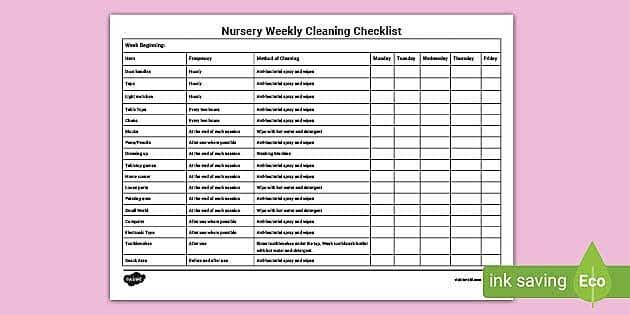Introduction: Why Cleaning Your Keyword List Matters
So, you’ve got a massive keyword list, huh? Maybe you’ve gathered 365 keywords (one for each day of the year) or even more. But let’s be real—how many of those keywords actually help your website rank? If you don’t clean and refine your keyword list, you could be wasting time targeting irrelevant or low-performing keywords.
Cleaning your Cleaning 365 KWs list ensures that your SEO strategy stays focused, effective, and up-to-date with Google’s latest algorithm changes. In this guide, we’ll walk you through why and how to clean your keyword list to maximize traffic and rankings.
What Is a Cleaning 365 KWs List?
A Cleaning 365 KWs list is a keyword list that includes up to 365 search terms—one for each day of the year—used for SEO and content marketing. The goal of such a list is to have a structured plan for targeting different keywords over time. However, not all keywords are worth keeping. Some may be outdated, irrelevant, or too competitive.
That’s why cleaning the list is crucial—it helps you focus on high-value keywords that actually bring results.
Why You Need to Clean Your Keyword List
You might be wondering, “Why go through the hassle of cleaning my keyword list?” Well, here’s why:
1. Avoiding Keyword Overload
Having too many keywords can be overwhelming. If you try to target them all, your SEO efforts will be scattered. Cleaning the list helps you focus on keywords that matter.
2. Keeping Up with Google’s Algorithm
Google constantly updates its ranking factors. Some keywords that worked last year might not be effective now. Removing outdated terms keeps your strategy fresh.
3. Targeting the Right Audience
Not all keywords attract the right audience. Some might have high search volume but low conversion rates. Cleaning helps you focus on keywords that bring engaged visitors.
4. Boosting Content Relevance
When you remove irrelevant or outdated keywords, your content becomes more relevant, increasing the chances of ranking higher on Google.
How to Clean Your 365 Keyword List
Now, let’s get into the action. Follow these steps to clean your Cleaning 365 KWs list and keep only the best-performing keywords.
Step 1: Remove Irrelevant Keywords
Go through your list and delete keywords that don’t align with your content or target audience. If a keyword doesn’t match your niche, it’s time to let it go.
Step 2: Check for Duplicate Keywords
Sometimes, you might have different variations of the same keyword. Instead of spreading your SEO efforts thin, focus on the most relevant version.
Step 3: Analyze Search Volume and Competition
Use tools like Google Keyword Planner, Ahrefs, or SEMrush to check:
- Search Volume: How many people search for the keyword?
- Competition: Is it too difficult to rank for?
- CPC (Cost Per Click): If it’s valuable for ads, it might also be great for organic search.
Keep keywords with good search volume and medium to low competition.
Step 4: Look at Click-Through Rate (CTR) Potential
Some keywords may get high impressions but low clicks. Use Google Search Console to identify low-performing keywords and remove them.
Step 5: Prioritize Long-Tail Keywords
Long-tail keywords (phrases with 3-5 words) are often easier to rank for and bring more targeted traffic. If your list is full of short, broad keywords, consider replacing them with long-tail versions.
Step 6: Track Performance and Adjust
SEO is not a one-time task. Keep analyzing your keyword performance and adjust your list as needed. If a keyword isn’t bringing traffic, replace it with a better one.
Tools to Help You Clean Your Keyword List
If manually going through 365 keywords sounds exhausting, don’t worry! Here are some tools that can make the process easier:
- Google Keyword Planner (Free) – Helps analyze search volume and competition.
- Ahrefs (Paid) – Provides deep insights into keyword ranking difficulty and search intent.
- SEMrush (Paid) – Offers keyword research and competitive analysis.
- Ubersuggest (Freemium) – Gives keyword ideas and performance data.
These tools can help you make data-driven decisions when cleaning your list.
Conclusion: Keep It Clean, Keep It Effective
Cleaning your Cleaning 365 KWs list isn’t just about deleting keywords—it’s about refining your SEO strategy. By focusing on high-quality, relevant keywords, you can improve your rankings, attract the right audience, and make your content marketing efforts more effective.
Remember, SEO is an ongoing process, so keep reviewing and updating your keyword list regularly. A clean keyword list is a powerful keyword list!
FAQs About Cleaning 365 KWs List
1. How often should I clean my keyword list?
It’s a good idea to review and clean your list every 3-6 months to stay updated with trends and Google’s algorithm changes.
2. Can I rank without cleaning my keyword list?
Technically, yes. But an unorganized list can slow you down, waste your SEO efforts, and make it harder to rank efficiently.
3. Should I remove low-search-volume keywords?
Not always! Some low-search-volume keywords have high conversion potential. Analyze intent before removing them.
4. What’s the best way to find long-tail keywords?
Use tools like Google’s “People also ask” section, Ubersuggest, and Ahrefs to find long-tail variations that match user intent.
5. What if I accidentally delete a good keyword?
No worries! Keep a backup of your original list before cleaning, so you can restore keywords if needed.

